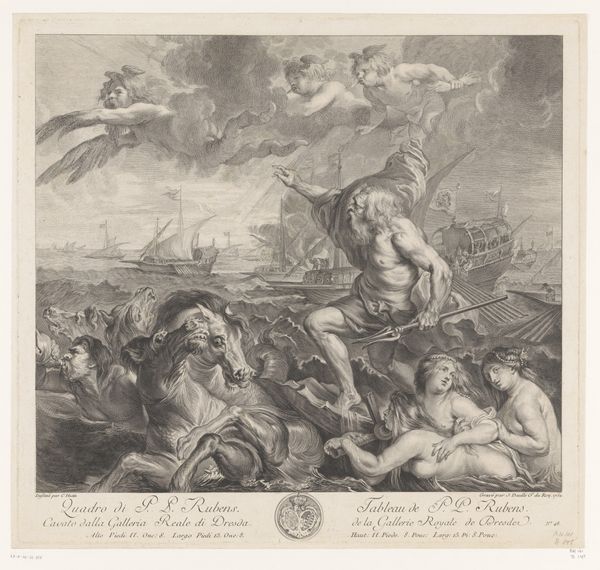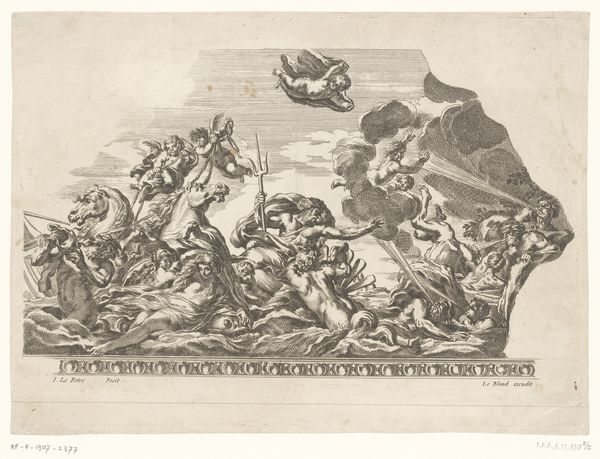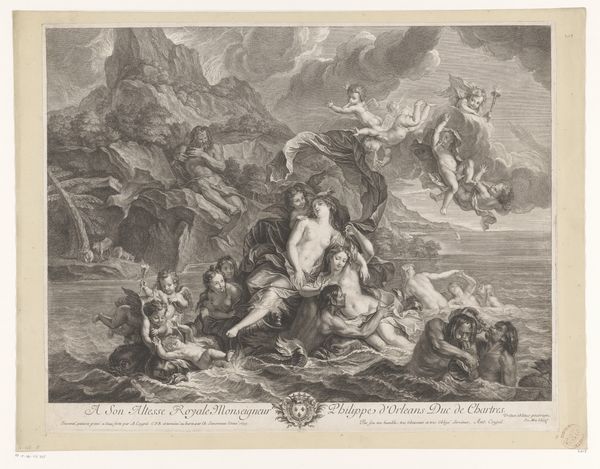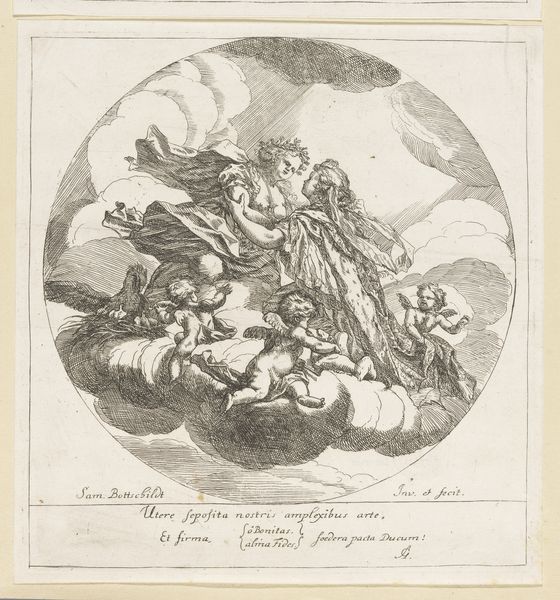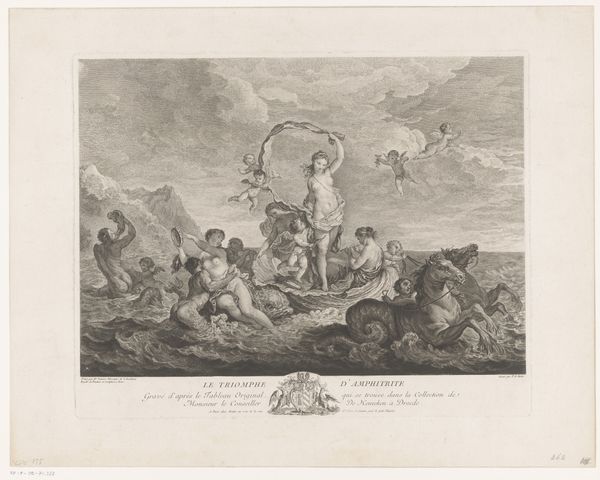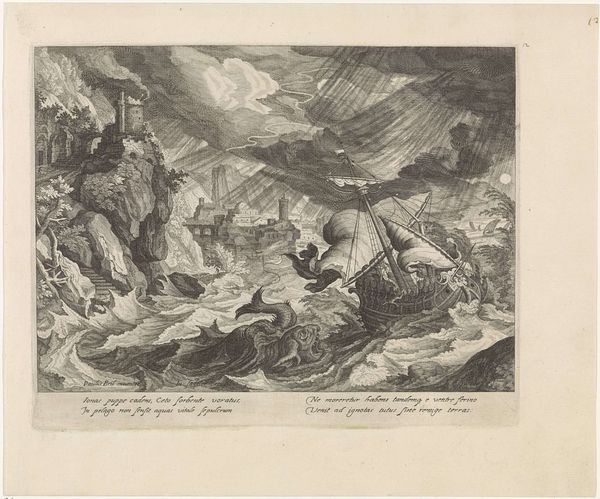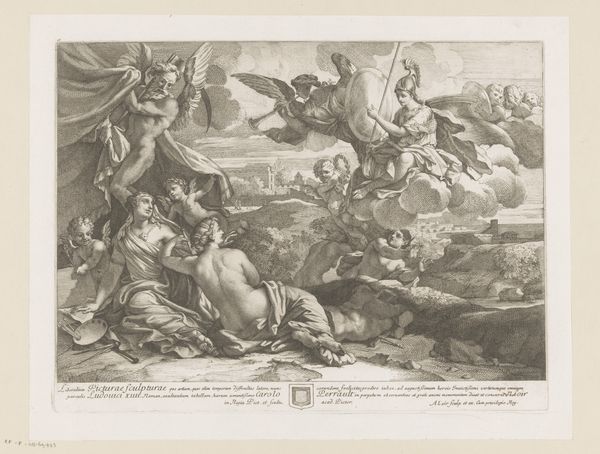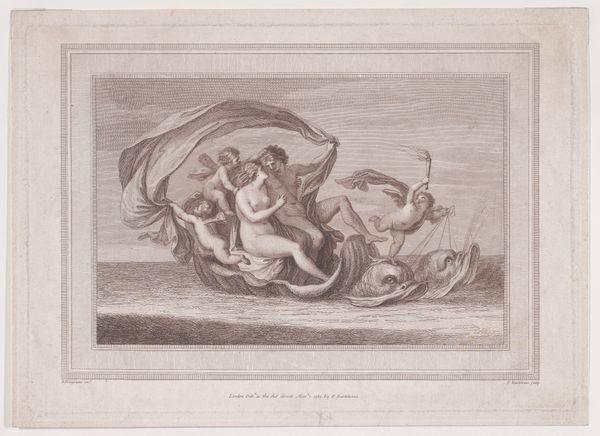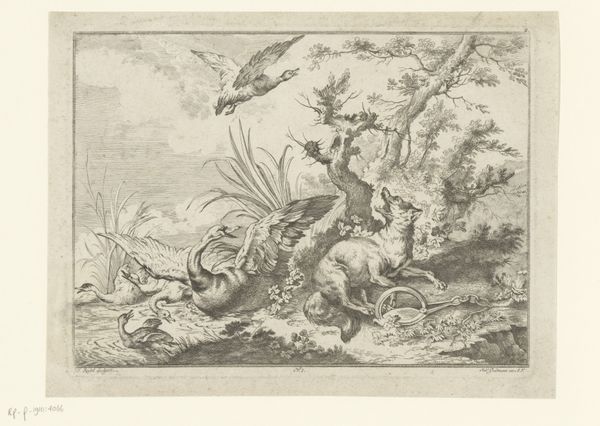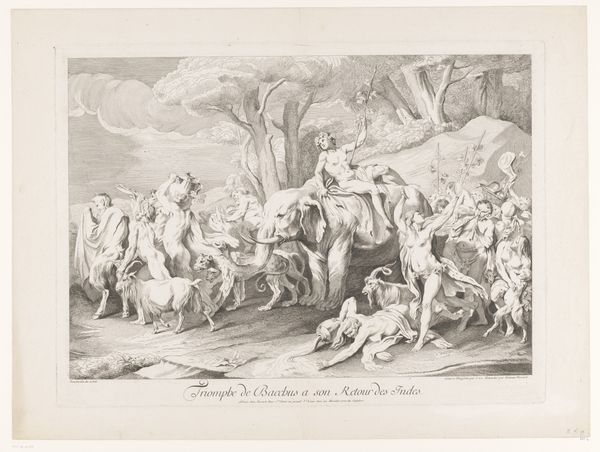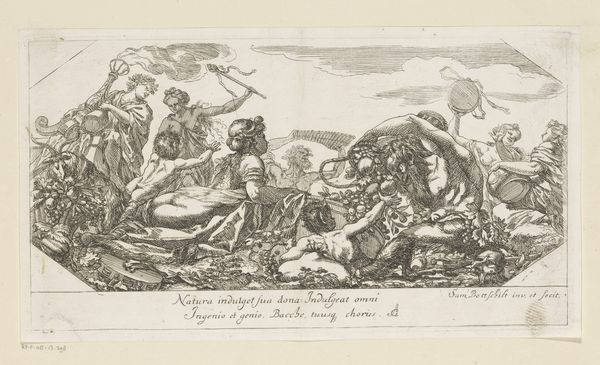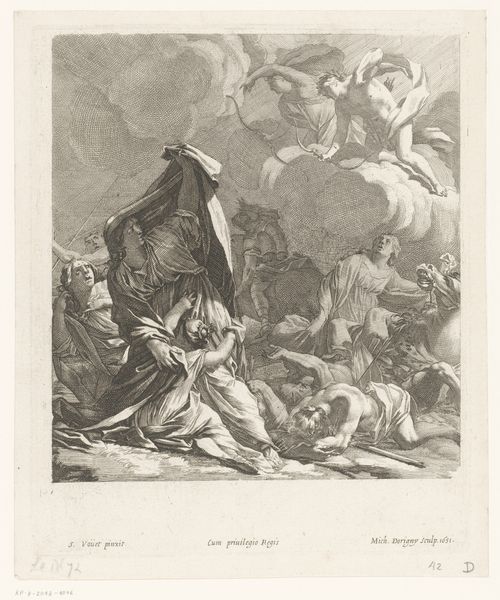
engraving
#
allegory
#
baroque
#
greek-and-roman-art
#
landscape
#
figuration
#
line
#
history-painting
#
engraving
Dimensions: height 455 mm, width 616 mm
Copyright: Rijks Museum: Open Domain
Curator: Here we have Etienne Fessard's 1739 engraving, "The Triumph of Amphitrite," currently held in the Rijksmuseum. Editor: The immediate impression is one of organized chaos. Despite being an engraving, the sense of movement is almost overwhelming—especially the rearing horses. Curator: It's fascinating how Fessard captures Baroque sensibilities in line. The print depicts Neptune, god of the sea, and his wife Amphitrite in procession. Look at how this work reproduces a moment intended to solidify power structures. These images reinforced existing notions about aristocracy. Editor: You see it as a symbol of authority, I notice more of how line weight dictates the entire composition. Notice how the heavier lines define Neptune and Amphitrite, drawing our attention, while finer lines create depth in the surrounding figures and the stormy sky? Curator: Well, precisely. Representations like these weren't mere decorations, they bolstered political ideologies tied to class, colonialism, and gender roles within French society. Remember this piece circulated widely through prints—making it more influential than if it remained exclusively with wealthy collectors. Editor: Perhaps. But to return to form, see how the artist employs an almost mathematical gradation from dark to light, pulling the viewer's eye strategically around the scene. There is intentional tension in the contrast between Neptune's active stance versus Amphitrite’s languid pose. It conveys their relationship dynamic as much as societal ones. Curator: But those societal dynamics dictated relationships; Fessard didn't operate in a vacuum. The piece glorifies royal patronage using allegory. Considering Fessard’s connections to court circles, this celebration of hierarchy becomes evident. Editor: Possibly. Regardless, consider the formal ingenuity with which Fessard translates textural elements—water, flesh, fabric—into the unforgiving medium of engraving! Each differing texture reflects the play of light. Curator: I concur. It's critical to note the symbolic function that visuals served within court cultures, perpetuating their values for broader society to reinforce dominance. This artwork wasn’t neutral. Editor: And yet it can't be reduced to *only* this symbolic role, I think; to consider only political implications dismisses so many masterful technical choices in rendering such visual dynamism. Curator: A valuable reminder—each informs the other.
Comments
No comments
Be the first to comment and join the conversation on the ultimate creative platform.

